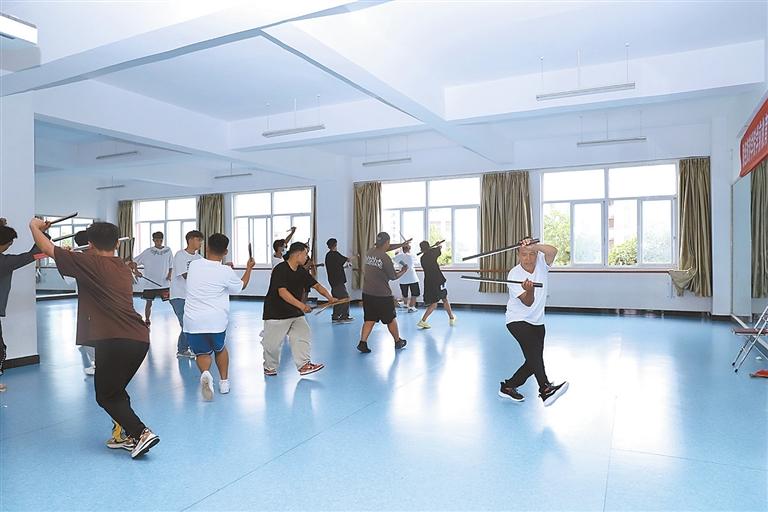Intangible cultural heritage into the campus: promoting intangible cultural heritage skills and sowing the "seed" of inheritance
96 views · Organized by 碍与暧 on 2022-06-15
June 11 is the 17th "Cultural and Natural Heritage Day". The State Bureau of Ethnic and Religious Affairs, the State Cultural Center, and Dehong Vocational College jointly organized the "Intangible Cultural Heritage on Campus" training activity.

This five-day training event aims to better promote intangible cultural heritage skills, inherit traditional culture, and play the role of "inheriting and helping" intangible cultural heritage talents. 13 non-genetic inheritors and folk artists will carry out training for teachers and students of Dehong Vocational College in 8 projects including Dai cucurbit, Dai clay pottery, Jingpo brocade, Jingpo knife dance, and De'ang water drum.
How to play the knife, how to move the dance steps, what to pay attention to when kneading the clay... The teachers show the intangible cultural heritage skills one by one, tell the traditional culture, and teach them hand-in-hand; the students listen carefully, learn with an open mind, and actively ask the teachers for advice. Through the training, students became interested in Dehong's traditional culture, strengthened their determination to inherit and promote intangible cultural heritage, and created a strong atmosphere for everyone to know, love and learn intangible cultural heritage.
Involving musical instruments
Hulusi (pinyin: hú lu sī), also known as "calabash flute", is a musical instrument of ethnic minorities in Yunnan. Hulusi originated in Lianghe County, Dehong Dai and Jingpo Autonomous Prefecture, and is mainly popular in Dai, Achang, Wa, De'ang and Brown. The Dehong and Lincang areas in Yunnan where ethnic groups live together are rich in local colors.
Guess you like
Organized by 南丘 on 2025-01-24
As a traditional Chinese wind instrument, hulusi is deeply loved by music lovers for its unique timbre and cultural connotation. However, because its material is mostly natural materials, such as bamboo, wood, etc., in the low temperature and dry environment, these materials are prone to shrinkage, cracking and other problems, which affects the sound quality and service life of fenugreek.
read >>
Organized by 氯化钠 on 2024-03-11
With the continuous integration of modern technology and traditional craft, fenugreek, an ancient national musical instrument, is also constantly innovating and developing, and a new type of multi-functional fenugreek has emerged. This new type of fenugreek not only retains the traditional graceful sound and strong national customs, but also adds a number of practical functions on the basis of the original, further improving the performance experience and teaching efficiency.
read >>
Organized by 风月呢喃 on 2024-03-11
Hulusi, as a traditional wind instrument of ethnic minorities in southwest China, has been deeply loved by music lovers for its beautiful, deep feeling and poetic tone. So, what exactly gives fenugreek such intoxicating sound?
read >>
Organized by 阿蘅 on 2024-03-11
Hulusi, as a typical representative of the traditional wind instrument of the ethnic minorities in southwest China, has a melodious tone and is deeply loved by the majority of music lovers. When discussing the charm of hulusi, its rich mode system is particularly worthy of attention. The variety of tone of hulusi enables it to perform a variety of different styles and emotional music.
read >>
Organized by 苏肆 on 2024-03-09
As a unique national wind instrument, double tone fenugreek is a product of innovative design based on the traditional single tone fenugreek. Its biggest feature is that it is equipped with one or more artificial blow holes and resonance cavity connected with the tube, so that the performer can issue two different sounds at the same time on the same instrument, which greatly enriches the expressive force and musical level of the gourd.
read >>

 渝公网安备 50010702504639号
渝公网安备 50010702504639号